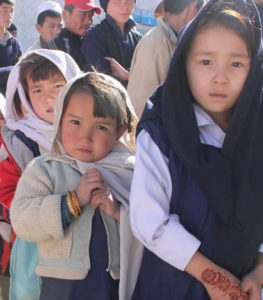Afghan returnees face difficulties at home
Hundreds of thousands of Afghan refugees who fled their homeland for neighbouring countries during recent conflicts are being forced to return home because of deportation and an economic downturn in the region.
The flow of Afghans forced to leave Iran turned into a flood in 2018, with almost 800,000 returning as renewed US sanctions sent the Iranian currency into freefall while also fuelling inflation.
The 773,125 voluntary returnees and deportees was 66 percent more than in 2017 and the trend is expected to continue, according to the International Organization for Migration (IOM).
“The reason why people are coming back is because of the reduced economic opportunities in the region… including Iran,” an IOM spokesman said.
The 2018 figure is the highest since the IOM began recording the numbers of returnees to Afghanistan in 2012.
Also, around 33,000 Afghans have returned from Pakistan, where many have lived since fleeing the Soviet invasion of 1979.
Over the past two decades Afghans have been paying smugglers to help them cross the little guarded border with Iran in search of work and to escape sectarian violence.
Smugglers charge up to $US500 per person in what has become a multi-million industry.
There are an estimated two million ‘undocumented’ Afghans in Iran, according to the United Nations’ refugee agency UNHCR. Another million are registered as refugees.
Many of the families of migrants are farmers who have been suffering through Afghanistan’s worst drought in living memory, compounding the misery caused by 17 years of conflict and underpinning their reliance on the remittances.
Melbourne Afghan community leader Nabi Mohammed said the returnees would still find life hard in Afghanistan.
“There are no jobs in Afghanistan so people go to Iran for work but now there are few jobs in Iran, so people have to go home,” he said.
Mr Mohammad said many returnees could become victims of sectarian violence which continues in Afghanistan.
Nearly half of the returnees from Iran – 358,065 – volunteered to come back to Afghanistan after watching their earnings shrivel up and jobs disappear.
Iran’s rial lost around half its value against the US dollar last year after the US pulled out of the 2015 nuclear deal.
The move triggered a reimposition of economic sanctions on the Islamic republic, which have worsened the country’s fiscal problems.
Laurie Nowell
AMES Australia Senior Journalist












